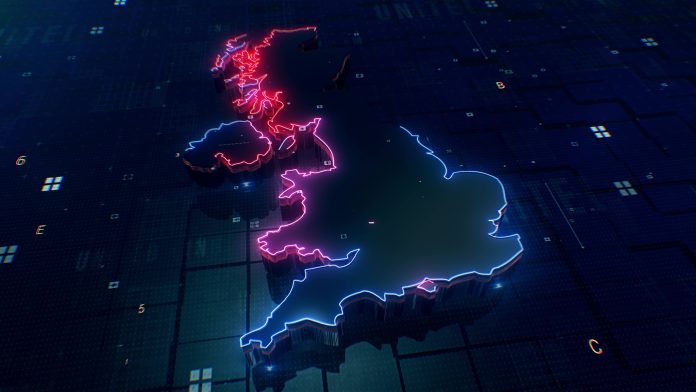UK utilities face a challenging environment, seeking to balance regulation, innovation, and customer satisfaction. Despite the uncertainty, there’s a strong appetite for technological advancements within the UK utilities market right now
There is much uncertainty in the UK utilities market right now. Industry operators face a multitude of significant challenges, including a shifting political landscape, an unclear regulatory environment, and the integration of new technologies and energy sources, all while serving customers’ needs and expectations. Yet one thing is certain: There is significant appetite among utilities organisations to work smarter, be more efficient, and harness technology effectively.
Additional funding would go a long way toward overcoming those various challenges. However, with budgets tighter than ever, funds need to be uncovered in existing expenditures. The solution to the funding dilemma can be found in reviewing cost centres, identifying opportunities to reinvest, and strategically accelerating digital transformation journeys.
Unique challenges for the UK utilities market
These core challenges are exacerbated by the demands of ensuring energy security, balancing supply and demand, managing the cost of the transition to renewable energy, and addressing fuel poverty.
The UK utilities market must manage all of these obstacles while navigating the post-Brexit market. Until 2020, the UK’s energy and climate regulations were underpinned by the requirements set by the European Union, but there has been a distinct lack of clarity since then.
Within the last term, the EU reached a record number of laws passed*, with a huge percentage relating to the Green Deal. In the previous four years, new regulations were set for electric vehicles, biofuel, renewable energy, emissions trading, wind energy, and more. It’s been a revolutionary term for the EU in setting distinct standards for the energy, utilities, and environmental sectors, but one the UK has not always benefited from.
With the introduction of a new government in 2024, utility organisations want to know whether the UK will align with the EU or set up its own structure.
Challenges for individual utility companies
All these concerns form a backdrop to how individual businesses are wrestling with their own challenges in delivering on their obligations to customers.
It’s an issue many industries face. How do you keep up with expectations when what customers consider “good” is determined not by their last interaction with you but by their last interaction with a company in any sector? Obviously, no one wants to deliver a poor or lesser experience, but in most instances, customers aren’t receiving the service they expect due to existing systems and infrastructure.
To offer their customers seamless interactions, utility companies must unlock the ability to work smarter, function more efficiently and deploy emerging technologies strategically.
Barriers to utility transformation
So, what’s stopping them? The likes of IoT and AI are no longer new concepts; many applications and services are available from reliable vendors. These new applications capture massive amounts of data and information that needs to be analysed to support accurate decision-making that delivers value to customer bases.
IT is caught between a rock and a hard place: They’ve got to keep the lights on and invest in (and deploy) emerging technologies, all while working with a budget and staff levels that remain static at best.
If only there was a way to unlock additional resources that could facilitate utility transformation.
How IT teams can unlock new resources
It just so happens there is a way, and it starts by looking at what they’re already spending money on. In most utilities’ IT organisations, the three biggest cost centres are:
- People
- Software, applications and infrastructure
- Maintenance and support for software, applications and infrastructure
To tackle high costs and find new budget resources, IT organisations need to look at how they can address these three areas.
- People are the heart of a company
- Your most important resource and critical to ensuring knowledge and expertise are retained and passed along internally. Staff and employees are your investment in the future and in the communities you serve. However, one area that should be reviewed is the use of consultants and contractors. Understanding how they can be procured and when they can be most wisely utilised could help you find opportunities to reduce expenditure.
- Prioritise software, applications and infrastructure
- With existing software, applications and infrastructure, it’s important to prioritise how much budget is allocated to their acquisition and deployment based on how strategic they are to the business. A huge number of expensive systems might be critical, but are they strategic? If not, can their cost structure be optimised? Can their role be performed via a comprehensive third party with better economies of scale?
- Maintenance for those applications and systems is linked to this strategy
- Many applications come with standard support packages and bundles from vendors that add a premium to operational expenditure. But by investing in alternative approaches to support, delivered via trusted third-party partners, you can often unlock more robust levels of service at a more competitive price point.
Transforming to tackle uncertainty
These steps can free up budget and resources that in turn can be redeployed to deliver strategic initiatives and innovation, whether meeting obligations to customers, matching their expectations or complying with new regulations.
To get it right, utility companies will need IT operations to help navigate the evolving regulatory landscape, ensuring compliance while enabling the adoption of new technologies to meet customer and business needs.
It must also be clear that human oversight (your people resources) is critical to the success of adopting, integrating and managing new technologies. What’s more, these steps can help your IT operations become more agile and responsive as new opportunities and technology advancements arise, allowing for investment in technology that builds customer confidence – it’s a win-win situation.











